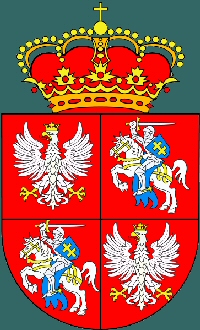Organizations
in wich Poland participates or participated
Polish-Lithuanian Commonwealth
 The Polish–Lithuanian Commonwealth, in Polish: Pierwsza Rzeczpospolita or Rzeczpospolita Obojga Narodów,
was one of the largest and most populous countries in 16th and 17th-century Europe.
The country's political structure was that of a semi-federal, semi-confederal
aristocratic republic and was formed in 1569 by the Union of Lublin,
which united the Crown of the Polish Kingdom and the Grand Duchy of Lithuania,
and lasted in this form until the adoption of the Constitution of May 3, 1791.
The Polish–Lithuanian Commonwealth, in Polish: Pierwsza Rzeczpospolita or Rzeczpospolita Obojga Narodów,
was one of the largest and most populous countries in 16th and 17th-century Europe.
The country's political structure was that of a semi-federal, semi-confederal
aristocratic republic and was formed in 1569 by the Union of Lublin,
which united the Crown of the Polish Kingdom and the Grand Duchy of Lithuania,
and lasted in this form until the adoption of the Constitution of May 3, 1791.
The Commonwealth covered not only the territories of what is now Poland and Lithuania, but also the entire territory of Belarus and Latvia, large parts of Ukraine and Estonia, and part of present-day western Russia (Smolensk and Kaliningrad).
By the 18th century, the Commonwealth was facing many internal problems and was vulnerable to foreign influences. Destabilization of its political system brought it to the brink of anarchy. Attempts at reform came too late, and the country was partitioned in
three stages by the neighboring Russian Empire, Kingdom of Prussia, and the Habsburg Monarchy. By 1795, the Polish–Lithuanian Commonwealth had been completely erased from the map of Europe.
Coat of arms of the Commonwealth
More information
Polonica stamps:
|
Antigua - Barbuda 1996, 24 VII German Dem. Rep. 1984, 07 II |
Lithuania 2005, 02 VII Lithuania 2006, 11 II |